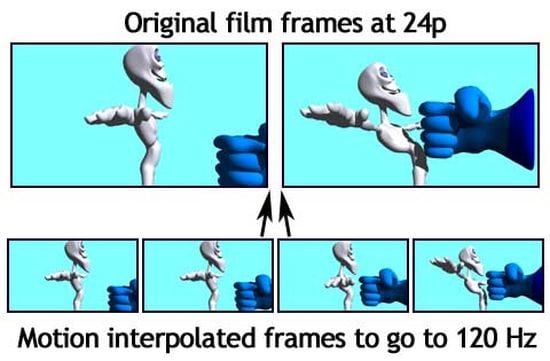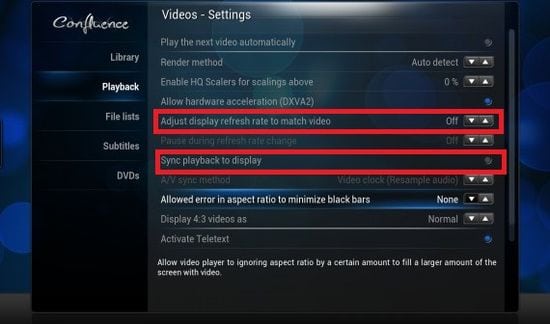Correct settings when connecting the TV to a PC significantly affect the playback quality. Basically, they depend on the algorithm of video signal processing.
Usually, modern LCD TVs of the middle price range provide a frequency of up to 100-200 Hz. An increase in frequency is achieved by interpolation of frames. But companies use different names for this technology. For example, this technology is called True Motion in LG TVs, Motion Plus in Samsung TVs, Perfect Natural Motion in Philips TVs or Real Cinema in Panasonic TVs.
Operation principle
The TV receives input signals with a frequency, for example, 50 Hz, forms an additional intermediate frame from two adjacent frames and then plays back all frames, including the newly formed one.
Accordingly, the frequency increases, for example, to 100 Hz. This process is called anti-aliasing and ensures smooth and realistic video playback. Interpolation algorithm reproduces incoming frames with a delay, calculating the offset difference between neighboring frames to create its own intermediate image.
CPU calculates scene, object displacement, background and other parameters with the help of appropriate algorithms and creates frame on the basis of these parameters. It’s designed to smoothing the transition between neighboring frames at the entrance. This effect becomes noticeable at panoramic shooting with offset of background. The intermediate frame reduces this offset between frames. Interpolation provides the smoother playback, increasing it by 2-4 times.
Playback with PC video card
PC has a video card with a HDMI yield. The maximum frequency of transmission for HDMI cable is 60 Hz in 1080p resolution. Most modern digital movies typically have a frequency ~ 24 frames / second. The video card of PC also generates an intermediate image with the help of video CPU and software.
This process is as follows. PC increases a frequency with 24 Hz to 50 Hz. After that, the image is directed to the TV input. TV is trying increase the frequency up to 100 Hz. As a result, the image on the screen starts to “float”. It accelerates, slows down or “hangs” for a second. Of course, viewing video in this mode is very inconvenient.
The problem is double video processing. Processing algorithms on PC and TV are not synchronized that leads to a chaotic sequence of their work.
Decision
Turning off anti-aliasing in the TV at first glance seems like an obvious solution to this problem. But the TV creates an image with a frequency of 100 Hz, and the computer’s video card only provides up to 50 Hz. Thus, disabling an image processing on a computer is more efficient.
This is done as follows. The auto-tuning function of the image frequency at the output of the player is switched. This option ensures that the output frequency matches the original video file frequency. In this mode, the player determines the frame rate at the input (24 Hz) and automatically converts the HDMI video output at this frequency. As a result, the TV receives a video stream at a rate of 24 frames per second without preliminary processing. The anti-aliasing mode on the TV provides image playback without jerks and braking.
This method is great for video playback. But the interface and the program will work slowly because of switching the image frequency to 24 Hz.
This setting is performed by the videoplayer (for example, the XBMC-player has this function) or using an autofrequency program.
This video demonstrates MCFI operation principle.


